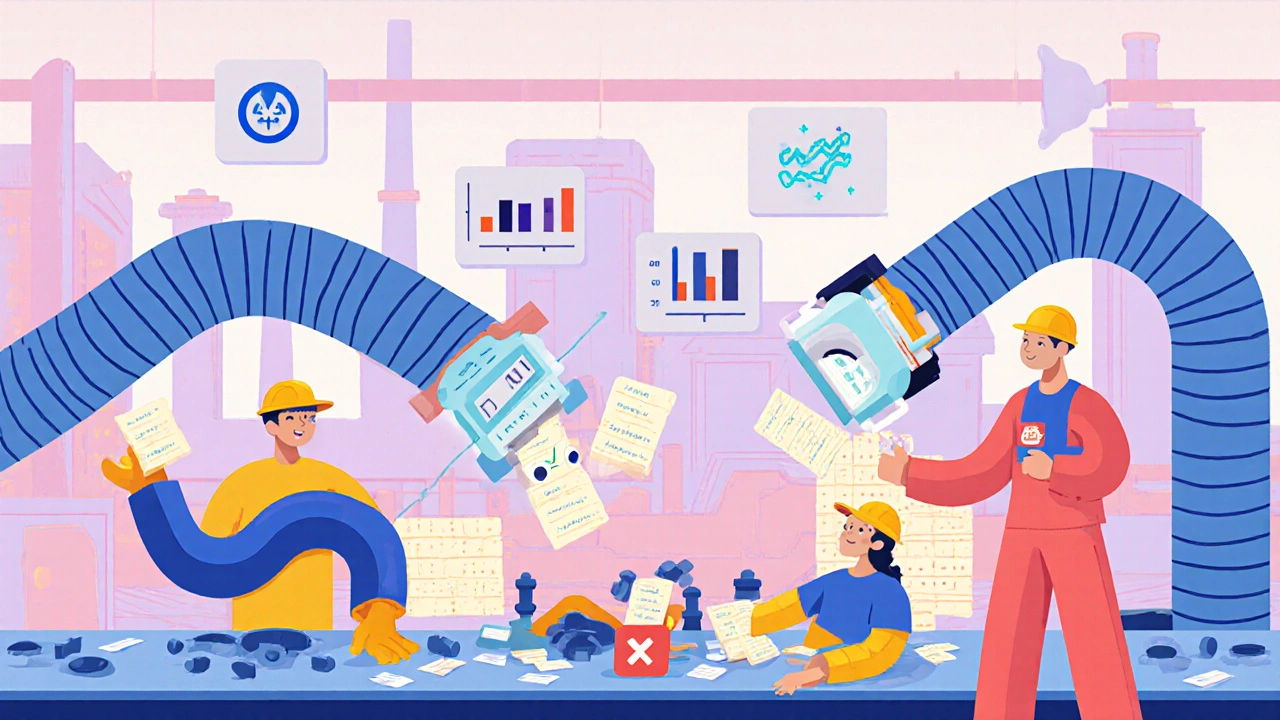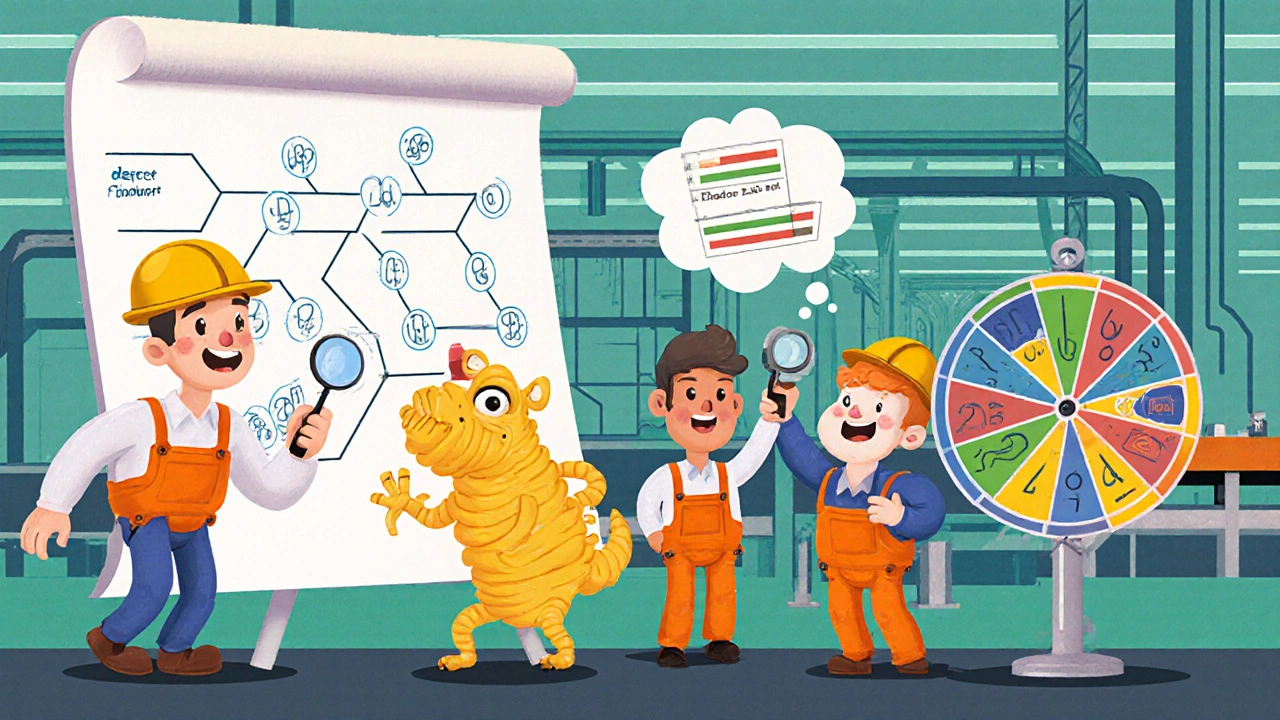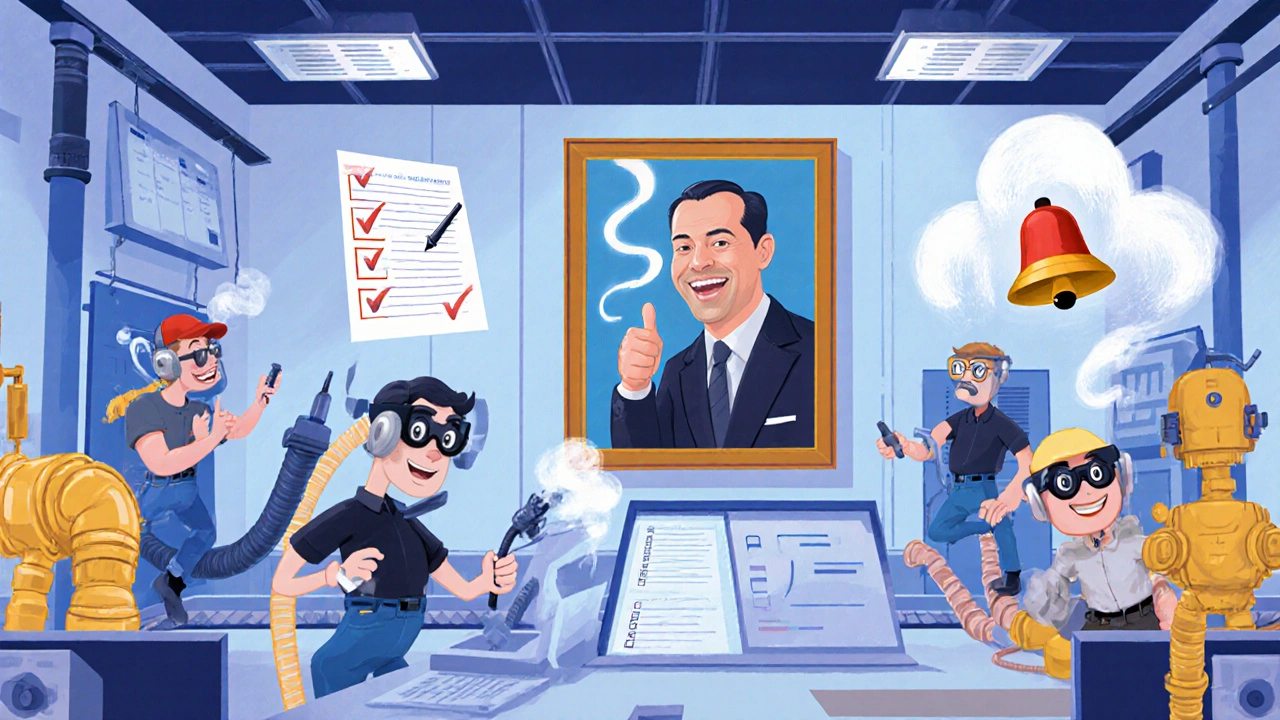
What quality control testing really means in manufacturing
Quality control testing isn’t just about checking finished products. It’s a system built into every stage of production to stop defects before they happen. If you’re running a factory-whether you make electronics, medical devices, or plastic parts-you’re not just trying to meet standards. You’re trying to avoid costly mistakes that hurt your reputation, your bottom line, and sometimes, your customers.
Back in the 1920s, Walter Shewhart at Bell Labs started using statistics to track variation in production. That idea, refined by W. Edwards Deming, changed everything. Instead of waiting until the end to find bad parts, smart manufacturers began asking: How do we prevent bad parts from being made in the first place? Today, that’s the core of quality control testing. It’s not a checkpoint. It’s a continuous process.
Step 1: Define clear, measurable quality standards
You can’t test for something if you don’t know what you’re looking for. This step sounds simple, but it’s where most manufacturing QA programs fail. Vague standards like “looks good” or “works fine” lead to inconsistent results.
Good quality standards are specific and measurable. For example:
- Surface roughness must be Ra 1.6 μm ± 0.3 μm
- Color must fall within ΔE < 2.0 on the CIELAB scale
- Tensile strength must be 450 MPa ± 5%
- Electrical resistance must be 10.2 Ω ± 0.5 Ω
These numbers aren’t random. They come from engineering specs, customer requirements, or regulatory rules like FDA 21 CFR Part 211 for pharma or IPC-A-610 for electronics. Without these exact values, inspectors can’t agree on what’s acceptable-and that’s how defective products slip through.
Step 2: Choose the right inspection methods and tools
Once you know what to measure, you pick how to measure it. This isn’t about buying the fanciest machine. It’s about matching the tool to the need.
For dimensional checks, you might use digital calipers, CMMs (coordinate measuring machines), or laser scanners. For surface defects, automated vision systems with AI are becoming common-Siemens’ Amberg plant uses them to catch micro-cracks in circuit boards that human eyes miss. In pharmaceuticals, spectrographic analyzers verify chemical composition per ASTM E415. For electrical components, automated testers check resistance, capacitance, and continuity in seconds.
Don’t overcomplicate it. A small shop making basic metal parts might only need go/no-go gauges and a micrometer. A medical device maker? They need calibrated instruments with digital audit trails that meet 21 CFR Part 11. The key is traceability. Every tool must be calibrated, documented, and verified regularly. The FDA issued 41% of its 2021 warning letters for inadequate calibration systems. That’s not a minor issue-it’s a shutdown risk.
Step 3: Train your team properly
Even the best process fails without trained people. Quality control isn’t a job you hand to the newest hire. It requires skill, attention, and understanding.
Training isn’t a one-hour safety video. It’s 16 to 40 hours of hands-on learning, depending on the complexity. Operators need to know how to read specs, use tools correctly, interpret data, and report anomalies. For example, in electronics manufacturing, inspectors must recognize solder joint defects per IPC-A-610 Class 2 or 3 standards. In pharma, they need to understand why a 0.1% deviation in active ingredient concentration matters.
Success is measured by certification rates. Top performers aim for 95%+ of staff certified in their QC tasks. Internal audits should show fewer than 5% nonconformities. If your team can’t consistently follow the process, no amount of automation will fix that.

Step 4: Monitor processes in real time
Waiting until the end of the line to find problems is like driving with your eyes closed. The best manufacturers monitor quality as the product moves through each stage.
In-process quality control (IPQC) uses random sampling at critical control points. For general electronics, sampling follows MIL-STD-105E with AQL levels: 0.65% for major defects, 1.5% for minor ones. But sampling alone isn’t enough. Real-time data collection is changing the game. Sensors on machines track temperature, pressure, vibration, and speed. That data feeds into software like Minitab or JMP, creating X-bar and R charts that show if a process is drifting out of control.
When a process shows signs of instability-say, a drill bit wearing down and causing holes to grow larger-teams get alerted immediately. That’s how you catch a problem before 500 bad parts are made. Companies using real-time inspection with automated probing saw defect escape rates drop by 63%, according to McKinsey’s 2023 report.
Step 5: Analyze results with data-not guesses
Don’t rely on gut feeling. Use numbers. Statistical process control (SPC) turns raw data into actionable insights.
Cp and Cpk values tell you if your process is capable. A Cpk above 1.33 means your process fits comfortably within tolerance limits. Below that? You’re flirting with defects. Taguchi methods help you find the best settings with fewer tests. Control charts show trends over time-like a rising trend in rejects after a shift change.
One mistake many manufacturers make? Relying only on statistics without understanding context. Dr. Linda Zhang at NexPCB found that teams ignoring operator feedback and process history had 22% higher false-negative rates. A spike in rejects might not mean the machine is broken. Maybe the air conditioning failed, and humidity changed the material’s behavior. Data tells you something’s off. People tell you why.
Step 6: Take corrective action-fast and documented
When a defect is found, the clock starts ticking. The goal isn’t just to fix the bad part. It’s to fix the system so it doesn’t happen again.
This is where CAPA (Corrective and Preventive Action) comes in. Every nonconformance must trigger a documented investigation. Root cause analysis isn’t optional. The FDA’s 2021 Form 483 observations showed 43% of issues came from unvalidated test methods or incomplete investigations.
Effective CAPA includes:
- Immediate containment (stop the line, quarantine affected batches)
- Root cause analysis (5 Whys, Fishbone diagrams)
- Corrective action (adjust machine, retrain staff, change procedure)
- Preventive action (update SOPs, add sensors, modify inspection frequency)
- Verification that the fix works
Regulations like 21 CFR Part 211 require this process to be completed within 72 hours for critical issues. Delays mean more bad product, more recalls, and more regulatory risk.

Why this matters: Cost, compliance, and trust
Quality control testing isn’t a cost center. It’s a profit protector.
According to a 2022 ASQ report, manufacturers with strong QC systems reduced scrap and rework costs by 32.7% compared to those with basic inspections. Automotive makers spend 5.8% of revenue on quality. Consumer goods? Around 3.2%. The difference? Reliability. A car recall costs millions. A bad batch of pills can cost lives.
Compliance isn’t optional. ISO 9001:2015 is the global baseline. Medical device makers follow ISO 13485. Pharma follows FDA rules. If you skip steps, regulators will find you. And in 2023, the EU’s MDR 2017/745 and FDA’s new QMM initiative are looking beyond paperwork-they’re evaluating your quality culture.
Customers notice too. If your product fails, they don’t blame the machine. They blame your brand. In an age of social media and instant reviews, one bad experience can echo for years.
What’s next? AI, digital twins, and the future of QC
Quality control isn’t standing still. New tech is changing how it’s done.
AI-powered visual inspection is now used by 37% of Fortune 500 manufacturers-up from 12% in 2020. These systems learn what a good part looks like and spot anomalies humans miss. Digital twins-virtual copies of physical systems-are helping Boeing cut assembly defects by 31%. Augmented reality glasses guide inspectors through complex checks, improving accuracy by 22% in Toyota’s trials.
But the biggest shift? The move from compliance to culture. As Dr. Michael Porter wrote in 2023, the most resilient systems combine Deming’s foundational principles with modern tools. You don’t need to be a tech giant to benefit. Start with clear standards. Train your people. Measure everything. Fix problems fast. The rest will follow.
How to start if you’re new to QC
If your operation doesn’t have a formal QC system yet, don’t try to boil the ocean. Start small:
- Pick one critical product or process
- Define three measurable quality specs
- Train two operators on how to check them
- Use a simple checklist and logbook
- Review results weekly
Small manufacturers can build a basic system in 4-8 weeks. Larger ones take 12-16 weeks. The biggest barrier? Consistency. 68% of facilities struggle with operator adherence. That’s why leadership must be involved-not just the quality team.
Common mistakes to avoid
- Using vague standards like “looks right”
- Skipping calibration of tools
- Training staff once and never revisiting
- Only inspecting at the end of the line
- Ignoring operator feedback
- Not documenting investigations
- Thinking automation replaces people
Quality control isn’t about having the most tools. It’s about having the right mindset: every part matters, every step counts, and every person has a role.
Comments (7)
-
Leo Tamisch November 19, 2025
Let’s be honest-this post reads like a corporate whitepaper dressed in denim. Quality control isn’t about CpK values or digital twins; it’s about the quiet dignity of a person who shows up every day and refuses to let a flawed part leave the floor. The real innovation? Human accountability. Not AI. Not sensors. Not even Deming. Just someone who cares enough to stop the line.
And yet… we outsource that dignity to algorithms while pretending we’re ‘modernizing.’ What a sad, beautiful paradox.
-
Daisy L November 21, 2025
AMERICA BUILDS THINGS THAT LAST!! 🇺🇸🔥
Other countries? They slap on a sticker and call it ‘quality.’ We? We calibrate. We document. We audit. We don’t cut corners-we CRUSH THEM!
And if you think FDA 21 CFR Part 211 is ‘overkill,’ you’ve never held a defective pacemaker in your hands. NOPE. NOT HAPPENING ON MY WATCH. EVER.
-
Anne Nylander November 23, 2025
Y’ALL ARE OVERCOMPLICATING THIS!! 😊
Just pick ONE thing. Measure it. Train two people. Write it down. Check it every week.
That’s it. No fancy charts. No robots. Just consistency. You got this!!
PS: I typoed ‘calibrate’ as ‘calibarate’ but you know what I meant. 😘
-
Franck Emma November 24, 2025
This is why I hate manufacturing.
You spend 12 years learning this stuff.
Then some intern in procurement buys cheaper screws.
And suddenly-your entire plant is a liability.
I’m exhausted.
Just let me cry in the breakroom.
-
Noah Fitzsimmons November 24, 2025
Wow. You actually think training people for 16–40 hours is ‘proper’? Bro. I’ve seen factories where the QC guy is the guy who unloads the pallets. And they still ship 98% defect-free. You’re over-engineering this like a PhD who can’t fix a toaster.
Also-‘Cpk above 1.33’? Cute. My cousin’s auto shop uses a flashlight and a gut feeling. They’ve been in business since 1987. You got a 5-year plan? Cool. I got customers.
Stop pretending complexity = competence.
-
Cooper Long November 24, 2025
Quality control is a universal discipline, not a national sport.
Deming taught us that systems matter more than slogans.
AI and digital twins are tools-not replacements for rigor.
Culture is built through repeated, small acts of integrity.
One defect escaped is one too many.
Do not confuse efficiency with excellence.
And please, stop using emojis in technical discourse.
-
Sheldon Bazinga November 26, 2025
LMAO at the ‘start small’ advice.
You think a small shop can just ‘pick one process’? Nah. They’re running 3 machines with 2 people and no calibration certs. Their ‘quality’ is hoping the customer doesn’t notice.
Meanwhile, big boys are out here using AI to predict failures before the machine even overheats.
But sure, let’s pretend ‘checklist and logbook’ is progress.
Also-‘68% struggle with adherence’? Yeah. Because the workers are paid $15/hr and told to ‘be the eyes.’
Fix the system, not the worker. Or don’t. I’m just here to roast your ‘thought leadership.’
